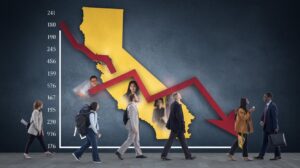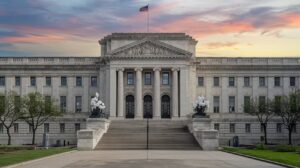How Tariffs Are Changing Consumer Spending Habits Across America is an urgent topic in 2025 as U.S. households feel the real financial strain of rising prices due to newly imposed tariffs. These economic changes are forcing Americans to rethink how and where they spend, and it’s reshaping the entire consumer landscape.
Understanding the Impact of Tariffs on Household Expenses
Tariffs are taxes on imported goods, and when they increase, prices on those goods often rise. In 2025, tariffs on imports from countries like China, Canada, and Mexico have raised the cost of products such as electronics, food items, and household goods.
According to the U.S. Bureau of Economic Analysis, average prices on affected imports have increased between 6% and 15% since late 2024. As businesses pass on these costs, U.S. households are adjusting their spending priorities.
How Are American Consumers Changing Their Spending?
Americans are becoming more cost-conscious, cutting back on non-essential items and turning toward cheaper or domestic alternatives. Many are delaying upgrades, canceling subscriptions, and even buying in bulk to manage their budgets better.
Pre- and Post-Tariff Spending Behavior
| Spending Category | 2024 (Before Tariffs) | 2025 (After Tariffs) | Shift Summary |
|---|---|---|---|
| Groceries | 25% | 30% | ↑ Prioritized due to rising food prices |
| Electronics & Tech | 18% | 10% | ↓ Delayed purchases and upgrades |
| Leisure & Travel | 20% | 12% | ↓ Fewer vacations, local focus |
| Healthcare Products | 14% | 18% | ↑ Shift toward preventive care |
| Home Essentials | 23% | 30% | ↑ Bulk purchases, price checks |
Why These Shifts Matter for the U.S. Economy
Consumer spending drives nearly 70% of the U.S. economy, so any significant changes in spending behavior can ripple through multiple sectors. Retail, logistics, and even health care are seeing demand shifts.
Increased tariffs are also affecting small businesses that rely on imported parts. They face thinner margins or must pass costs to customers, further fueling consumer hesitation and price sensitivity.
What Experts and Government Data Reveal
A 2025 report from the Federal Reserve shows a 9% drop in discretionary spending across U.S. households compared to the same time in 2024. The hardest-hit groups include middle-income families and small business owners.
What Can U.S. Consumers Do Right Now?
Here’s a quick action guide for American consumers navigating tariff-inflated prices:
Adjusting Spending in a Tariff-Driven Economy
+--------------------------+
| Adjusting Household |
| Spending in 2025 |
+-----------+--------------+
|
+-------------------------------+----------------------------------+
| | |
Essential Prioritization Budget Rebalancing Smart Substitution
| | |
- Buy in bulk - Track all expenses - Switch to U.S. brands
- Cut luxury items - Reallocate monthly costs - Use discount apps
- Delay big purchases - Set spending caps - Opt for local services
Conclusion: Will Consumer Behavior Return to Normal?
The economic aftershock of new tariffs may cause permanent behavioral shifts in the way U.S. consumers manage their money. Some families will permanently adopt more frugal habits, while others may continue to push back on non-essential purchases until stability returns.
Industry experts estimate that if tariffs continue into 2026, long-term economic adaptation could reset consumer expectations across sectors like travel, retail, and tech. This isn’t just a short-term shift—it could define a new normal for the U.S. economy.
[USnewsSphere.com / fr.]





